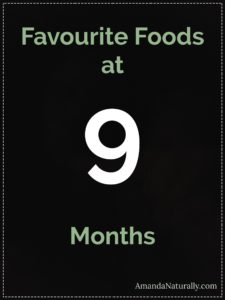 Two things before I get into the meat of this post:
Two things before I get into the meat of this post:
1. If you’re interested, read the previous posts in this series first: First Foods, Favourite Foods at 6 Months , Favourite Foods at 7 Months and Favourite Foods at 8 Months.
2. This is a JUDGEMENT-FREE POST: Please note that this not how you *should* do things. This is just a window into how I did things, and I relied mostly on my instincts. Do what feels right mama. *Should precedes shame* so I strongly encourage you not to *should yourself*! Parenting is hard enough as it is. You’re doing great!!
Favourite Foods at 9 Months
Food really started to become a thing around 9 months. Suddenly Baby H was really into it and eating a substantial quantity. So much so that it started pushing nursing sessions, which I was completely ok with because she still nursed a lot! Up until now food was more of a fun, experiential thing. Great for learning flavours, textures and pincer grip (as well as how to sit at the dinner table), but it didn’t have ever seem to fill her up. Then she hit 9 months and started eating!
Now, instead of her getting a bite of our meals, she started making an impact! For example, our favourite sausages come in a package of 4 at just over 1lb of meat. We used to cook 1 package, each have 1, and have 2 leftover for our lunches the next day. Now the kiddo can polish off half a sausage to herself some nights, putting a serious dent into our leftovers! Same thing with ground beef – I used to cook 1lb, now I have to cook 2lbs to make sure we have leftovers!
Another thing that happened around this time was Baby H started realizing what was on our plates vs. hers. I was surprised at how quickly this happened. So gone are the days (already!) of us eating gluten-free pizza with goat cheese, and making her eat sardines – LOL. This was a really great lesson in setting an example though. Babies are incredibly aware of their surroundings, so if you want them to eat well, you need to as well.
Speaking of being aware, she also started to get a little choosy about what she wanted. Now, it didn’t mean she became “picky, although it could easily have been interpreted that way if we didn’t give her time and variety. What seemed to be happening was she wanted some control over what she ate. So we made sure to offer her 3-5 different foods (anything green was literally her fav) and allowed her to pick and choose during the meal. Interestingly, if she polished off all of her blueberries first (what’s with every baby and blueberries??) she often moved on to the other things on her plate once they were gone. Giving her control, within set limits, proved to be very effective at creating pleasant meals where she ate most of the food we gave her! And if she chose only to eat avocado and blueberries for a meal? We didn’t sweat it. There’s no forcing a kid to eat and those are damn healthy foods. She also always seemed to naturally balance out by eating 1.5 eggs the next morning or half a sausage at lunch the next day!
A Note about Dairy
I had planned on trying organic goat yogurt around this time, but unfortunately she had an eczema flare (secondary to me trying to reintroduce ghee into my diet) so I’m waiting until it resolves.
Grassfed butter and fermented, high-fat dairy absolutely can have a place in a baby/child’s diet, just be very aware for possible reactions. The last thing I want to do is scare anyone (because most people are already terrified about solids), but an immunogenic response to dairy is a major contributor to quality-of-life health issues in kids. Everything from ear infections and chronic dribbly noses; to eczema and diaper rash; from reflux and constipation or loose stools; to bedwetting and behavioural issues (in older kids). Many foods can be associated, but there’s something about dairy (followed closely by gluten) that just seems to exacerbate these common childhood health issues.
Go To Foods at 9 Months
At this point, the kiddo was eating the majority of what we were (still excluding white rice and salads). We follow a standard paleo diet, made into a template for our tolerances:
- excluding nuts and seeds (I don’t tolerate them rightness)
- including white rice and goat cheese (we tolerate both great! But haven’t introduced these to the kiddo yet)
- the hubs tolerates nuts, legumes, organic corn and other GF grains (I don’t), so he snacks on those foods occasionally (but not the kiddo yet)
Mostly we’re a meat/fish, veggies, starchy veggies (occasionally rice or sweet potato noodles) and quality fat household.
Daily Nutrition
Things that we focus on getting into all of our diets weekly are:
- fermented foods daily (kombucha and sauerkraut being the most common)
- bone broth (although hard in the summer, we cook our rice in it and make instant pot/slow cooker meat in it)
- fatty fish at least 3 meals per week (salmon en papillote or grilled once/week, sardines at least 2x per week)
- other seafood (tuna, shrimp, oysters, mussels)
- vegetables at every single meal
- organ meats (I’m going to be honest, I’ve slipped on the liver consumption. When I realized this, I made a big batch of homemade burgers with ground heart in them – my favourite way to consume organ meats – but unfortunately I seasoned them with a delicious spice blend that contained sesame, which I seem to have developed a pretty intense immunogenic reaction to in this postpartum season of life. So the hubs and the kiddo are eating them, and I eat another can of sardines. Sardines contain the organs so at least I’m getting some there!)
Typical Breakfasts
- green eggs (in a blender, blend a large handful of spinach and 6 eggs for the whole family, 3 eggs for just me and H, 4 for my husband and H) scrambled in avocado oil or bacon grease with avocado and blueberries
- fried eggs, leftover sweet potatoes or white potatoes, cucumber or berries
- smoothie – like my Green Mango Smoothie, but with exclusively collagen, no protein powder. My other favourite flavour combo right now is frozen raspberries, frozen mango, spinach, collagen, full-fat coconut milk and a splash of raspberry kombucha.
- leftovers
Typical Lunches
- almost always leftovers (in fact not having leftovers takes so much more work!)
- sardines or much less frequently tuna, cucumber, berries, fried plantain (either sweet or green now)
- smoothie (see above)
Typical Dinners
I’m obsessed with meal planning right now, which is something I’ve never done! But having to make a decision every day about dinner had become super stressful. So now I make a plan on Sunday for Monday-Thursday and we eat well, don’t waste food and still have the weekend to be flexible or play around with fun recipes. As a result, I have about 10-15 recipes that I rotate through, some of which show up every week.
- taco salads with fried plantains
- sausages, roast potatoes, broccoli & cauliflower (all on baking sheets, all in the oven for 45 minutes at 375) with sauerkraut and sautéed onions if I have time!
- salmon en papillote, asparagus and rice (made with bone broth, Baby H gets berries instead of rice)
- thai curry beef on sweet potato noodles (made with stewing beef)
- pulled pork or chicken (onion, pork shoulder/chicken thighs and a clean BBQ sauce in a slow cooker all day) on shredded sautéed sweet potato, side salad
- burgers, salads, sweet potato wedges
- pork chops, potato salad (with a simple lemon dijon vinaigrette) and broccoli
- grilled fish (trout, pickerel, snapper), salad, rice or potatoes
- thai curry shrimp on rice or sweet potato noodles (no recipe, simply sautee desired veg, set aside. Quickly sauté shrimp seasoned with salt and pepper. Deglaze pan with bone broth & thai curry paste. Add veggies back in and some coconut milk. Serve over noodles or rice.
Snacks
We’re not huge believers in snacks over here, mostly because it often means meals aren’t being designed properly, or you’re not actually hungry but bored! For kids, snacking often results in being picky at meals because they know they can have a snack later.
That being said, I’m breastfeeding still and doing Crossfit a few days/week, so I simply don’t have the space in my stomach to consume the 1000+ calories at every meal to hit my 3000-4000 calorie/day requirement, LOL. If I’m eating around the kiddo, I make sure it’s something she can also have. If it’s post-WOD on my way home from the gym, it’s a “clean” turkey sandwich, or if it’s during her nap, it’s almost always plantain chips. Snacks that we enjoy together are:
- cucumber slices – her absolute favourite. In fact, I often give her a slice of cucumber if I need 10 minutes to get dinner ready and she just wants to be on my hip. I said I would never placate with food, but if I’ve learned 1 thing so far on this parenting journey, never say never…
- frozen mango in her “popsicle” (aka, her Boon silicone teether), especially if she’s teething
- smoothie (see above)
- banana muffin (made without maple syrup)
- blueberries, raspberries or grapes and a small glass of full-fat coconut milk

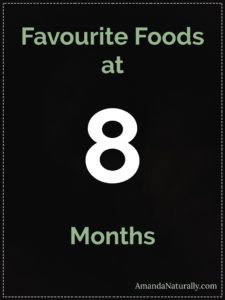 Two things before I get into the meat of this post:
Two things before I get into the meat of this post:
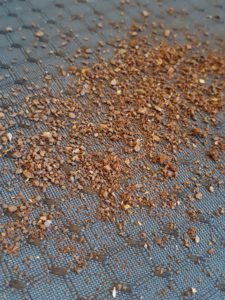
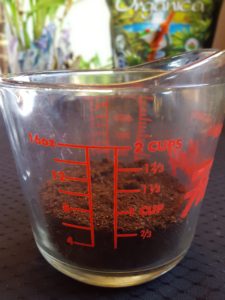
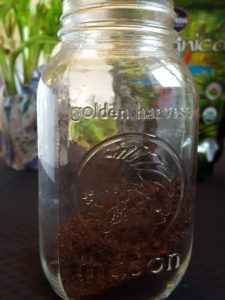
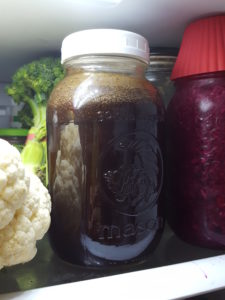
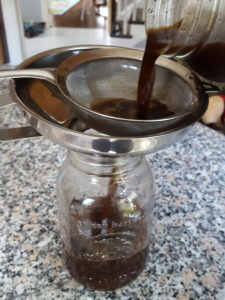
 My favourite way to enjoy cold-brew is:
My favourite way to enjoy cold-brew is: